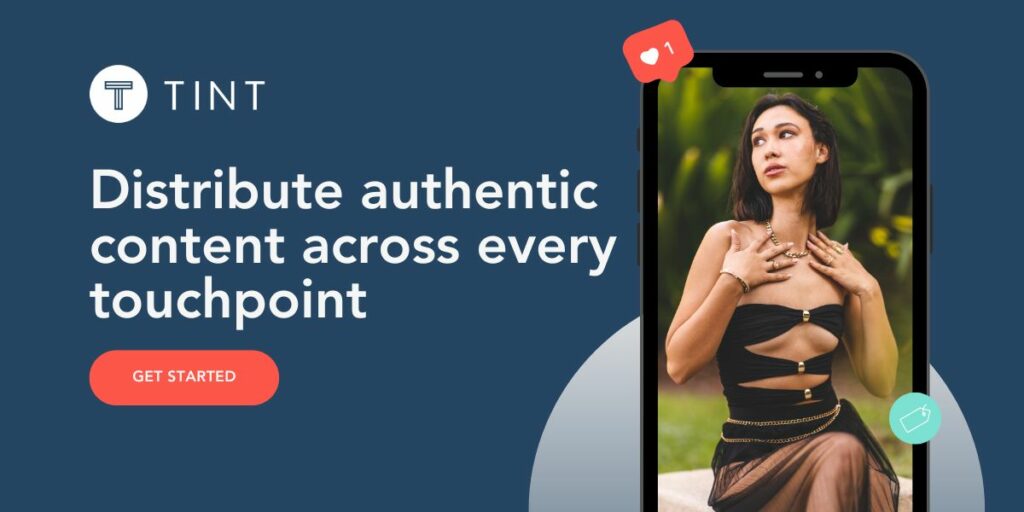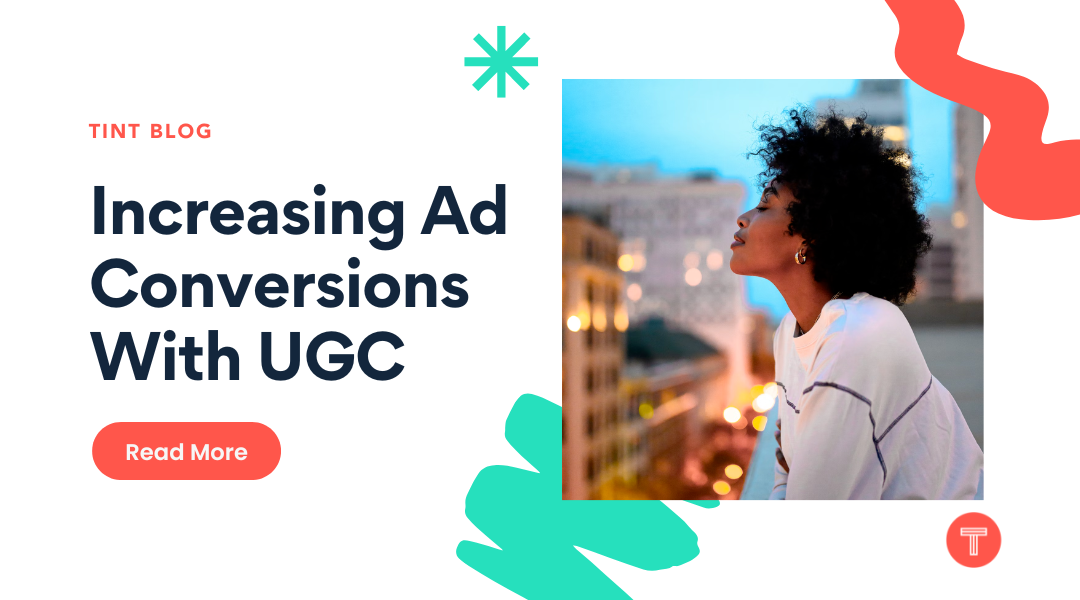User-generated content ads outperform conventional ads on the same topic by 20-50%.
Why?
The psychology behind social proof.
People are naturally inclined to look around and see what other people are doing before making a buying decision. We like to copy the behavior of our peers.
User-generated content feeds into buyers’ desire to see other people using products and trusting brands — before making their purchase. And they’re not just looking for the opinions of celebrities or authority figures.
“People are influenced by shared interests, not necessarily popularity,” Instagram explains.
Artists want to know what type of watercolor paint their peers are using (and how they’re enjoying it). People with curly hair want to see the experience somebody had using a specific brand of shampoo. Buyers looking to purchase a new vehicle want to hear how happy another customer is with their purchase.
Adding user-generated content to ads feeds into the social proof buyers yearn for.
What is User-Generated Content
User-generated content is a photo, video, testimonial, or feedback created by customers, influencers, and UGC creators about a specific brand and product. In comparison to brand-created content:
- 76% of consumers have purchased a product because of someone else’s recommendation before.
- 72% of consumers believe that reviews and testimonials submitted by customers are more credible than the brand talking about their products.
- 62% of consumers report that they are more likely to click on content like ads, websites, social posts, or emails, that feature customer photos rather than an image created by the brand.
Here’s an example of a UGC video from a customer that bought The Pink Stuff (“the miracle cleaning paste”) after seeing another UGC video from an influencer they trust.
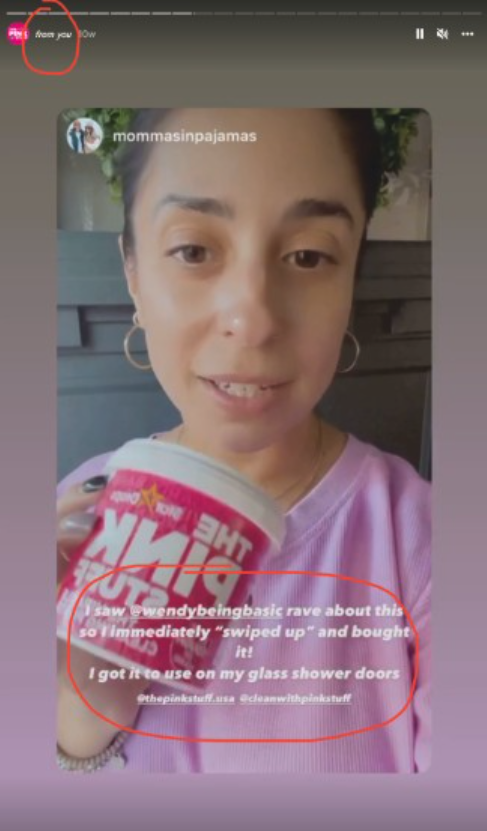
Your buyers are looking to fulfill the social proof desire in their minds.
If you can show them how happy other customers (that are just like them!) are with their purchase, you remove friction from your marketing funnel and nudge them forward towards buying and joining your community.
How Do Brands Get UGC?
Building your content library doesn’t require hiring somebody to stalk your marketing channels and screenshot UGC as it gets published. Thankfully technology has driven us far from that point and automated the process. TINT’s machine learning platform finds UGC and automatically collects it into your very own dashboard. TINT will tag UGC based on your preferences to help you organize content by product or campaign.
Brands that are new to building out their content library, or want to find fresh content to post across their marketing channels use 3 strategies to collect UGC:
- Collecting the UGC their customers are already creating (TINT can find UGC even if your brand wasn’t tagged in the photo or video!).
- Hiring influencers to run campaigns for brand awareness or conversions.
- Outsourcing UGC production to UGC creators who expertly create content that explains your products, the benefits, and who they’re for.
The bonus of each of these strategies is that it inspires customers to create more UGC. 60% of consumers wish that more brands would tell their fans and customers what type of content they want them to create and 72% of users will accept a brand’s request to use their content.
FedEx uses its Instagram channel to share UGC from (and with!) fans. Just by adding UGC to their social channels, FedEx’s follower count grew by 404%!
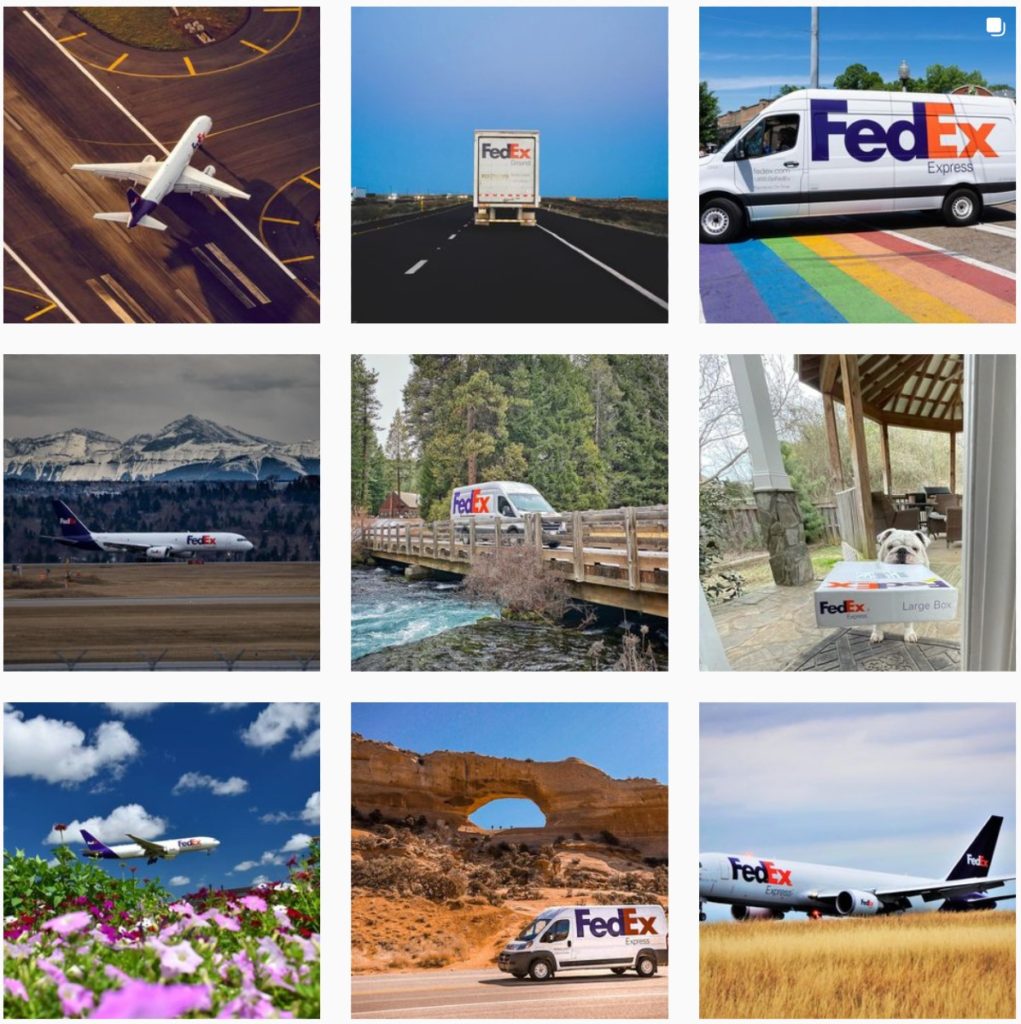
People want their favorite brands to share their photos and images — putting them on the pedestal of their marketing channels.
For brands, these become golden nuggets of content to repurpose on your paid ads channels.
How to Increase Ad Conversion Rates with UGC
Increasing ad conversion rates with UGC is a strategy of creating social proof around the aspects of your brand your customers are most hesitant about.
For example, if you’re a new brand on the eCommerce scene — buyers want to know that you’re legit. They need to know they’ll get the products they pay for and that your products are as high-quality as you promise them to be.
This is exactly why The Pink Stuff features UGC on their social media channels.
But, if you’re a well-known brand like Nike and Marriott, you have to worry less about proving your legitimacy and more about getting people to say yes to your products (over the other available options). In this case, your focus is on sharing specific deals and product experiences that you know your customers are interested in.
The key is understanding what your customers are looking for.
“Marketers must get to know their target audience in order to tailor their efforts in the appropriate manner,” according to The University of Southern California. “They need to have a solid grasp of the brand’s purpose, the needs it plans to fulfill, and how the brand will inspire the consumer to believe to the point of loyalty.”
The Ideal Mixture of Content for Ads and Formats
To garner 12x engagement from videos with UGC over any other type of content and a 28% increase in ad conversion rates when combining UGC and paid content — you need the right mix of images and short-form video.
What does that look like?
(Before you publish UGC, use TINT’s Attention Score to create higher converting ads, maximize engagement, and drive more purchases by looking through the eyes of your buyers).
Start by making each type of content below 30% of your strategy. Then, use measurements to figure out which content is performing best, for what campaign, and specifically for which products.
For your cold leads:
Your cold leads need the most attention-grabbing UGC content you have. They need content formats that replicate the famous copywriting formula: AIDA. Attention, interest, desire, and action are necessary to grow brand awareness.
The best type of UGC to use in your paid ads at this stage is a short-form video: Instagram Reels, TikToks, and YouTube Shorts.
These videos can grab attention by featuring an expert or celebrity they’re familiar with (including micro-influencers). They’re storytelling-driven content that resonates with like-minded users.
The Container Store ran a #ShowUsYourDrawers campaign on TikTok to garner UGC from their audience. By working with celebrities like Drew Barrymore and Jose Rolon, they grabbed so much attention that their hashtag has over 4.8 BILLION views.
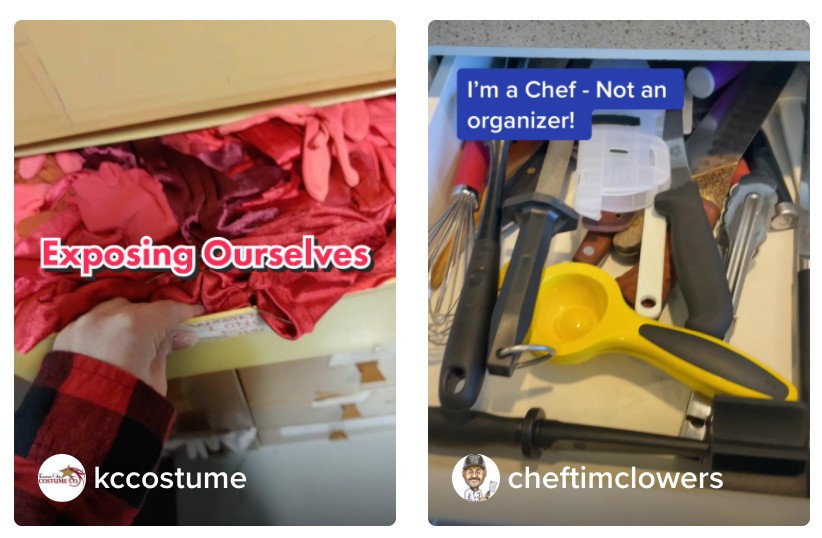
Using TINT, The Container Store can automatically collect all the UGC created for this campaign and get the rights to repurpose it in their paid ads. Yep, all of that automatically.
For your warm leads:
Your warm leads are more familiar with your products. They still need you to grab their attention (the online world is a distracting place) but they need you to show them how happy customers are with your product. They’re already in your brand’s matrix, but they need more details to know that your products are the right fit.
The best type of UGC to use in your paid ads at this stage is a short-form video: Instagram Reels, TikToks, and YouTube Shorts.
These videos share more UGC (from happy customers or UGC creators) that creates social proof. They’re educational videos about your products and how to use them that drive people to want to buy them.
This UGC TikTok from Cheygren is the ideal video for warm leads of Nuface. By using this video as a paid ad, Nuface can target TikTok users that follow them and have engaged with their brand but haven’t bought their own Nuface yet. Nuface knows these users are interested in their product, but they need a better understanding of what to expect (and they want to hear it from a customer!).
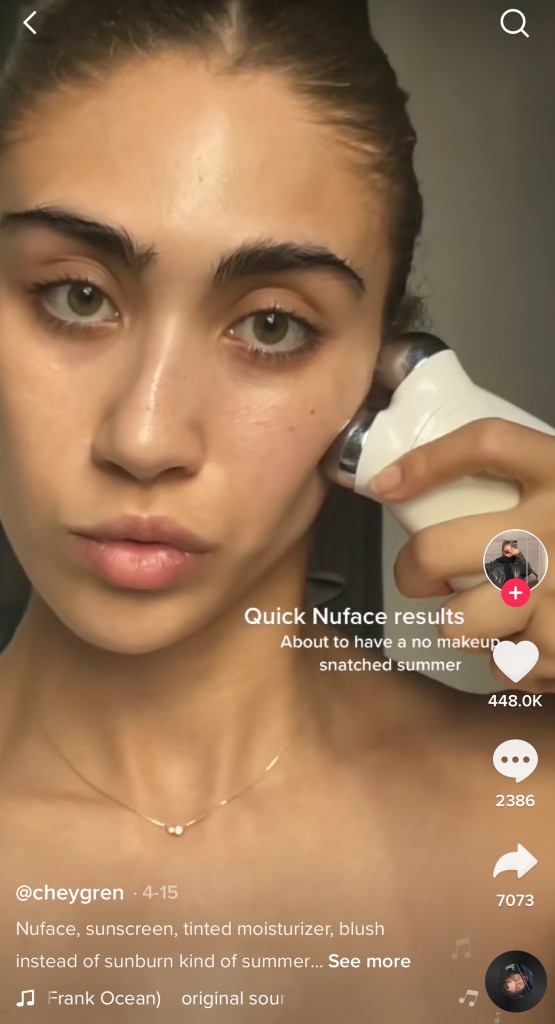
For your hot leads:
Your hot leads are ready to buy. They’re just waiting for the right moment. It’s your job to create it for them. This is the ideal time to introduce FOMO, scarcity, or urgency through your UGC content.
The best type of UGC to use in your paid ads at this stage are images and videos with one CTA — make a purchase. UGC images and videos at this stage immediately tell prospects that now is the time to buy without them having to wait to watch a video for 2 minutes to find out. These ads are specifically targeted to people who are most likely to purchase.
These videos lean heavily on social proof to show the after-state customers are in thanks to your products and are focused on calls to action for purchase.
Rent the Runway can turn this UGC review into a carousel ad that displays the UGC image, the review, and the brand-created image of the dress. They can also include the “How Others Wore It Section.” This type of UGC is ideal for hot leads that have already visited Rent the Runways website and looked at this dress but need a paid ad to remind them about it.
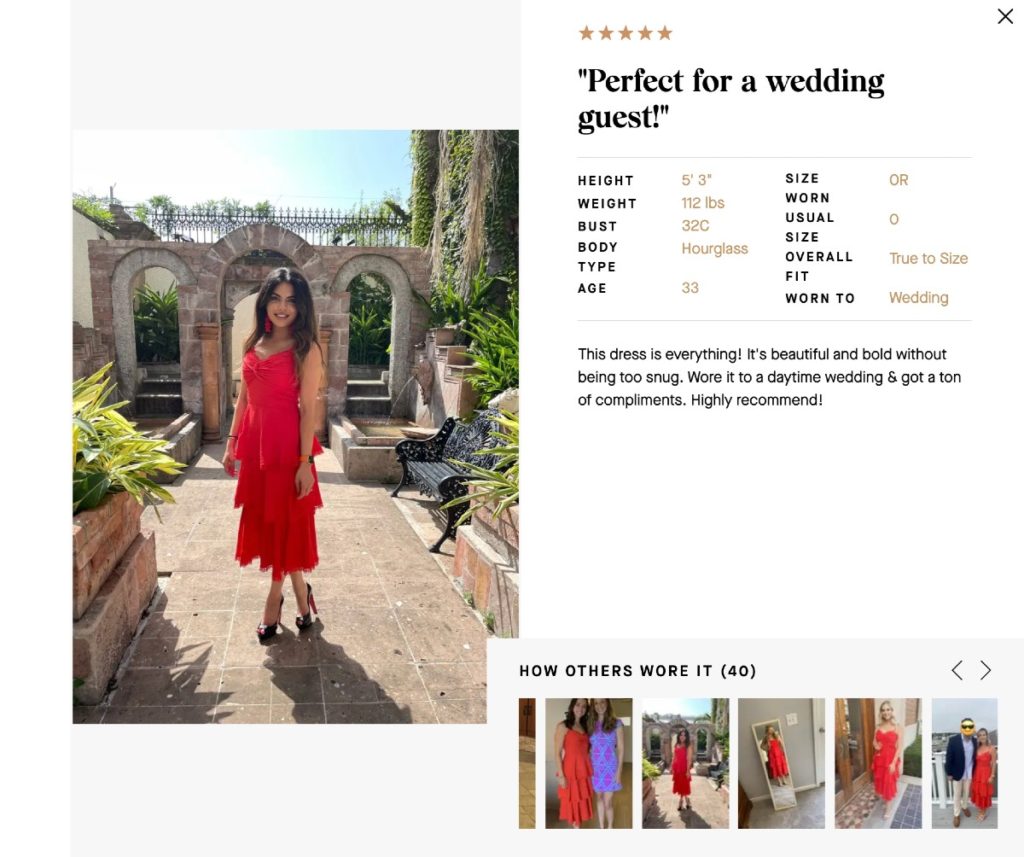
Inside TINT, you’ll get access to all the metrics you need to figure out what content is performing and which needs to get optimized. UGC shouldn’t be a guess-and-check game. By integrating TINT’s platform into your marketing strategy, you’ll get immediate feedback as to how well your UGC is performing for each type of lead (cold, warm, and hot).
Instead of spending time, money, and team energy on content that’s not working — you can pivot quickly and double down on the highest-performing ad assets.
The Power of UGC
Brands like Nike, Marriott, and LinkedIn have tapped into the power of UGC for years. These brands know that their customers want to hear from other customers, more than they want to hear the brand talk about how great they are.
Using customers’ voices brands connect with their audience and grow their community, drive engagement, and increase customers.
All through UGC content, their customers are thrilled to create and have shared across the brand marketing channels.
Tap into the power of UGC through TINT and get access to our Attention Score, Rights Management, Experience Builder, and more. Schedule a TINT demo today.
